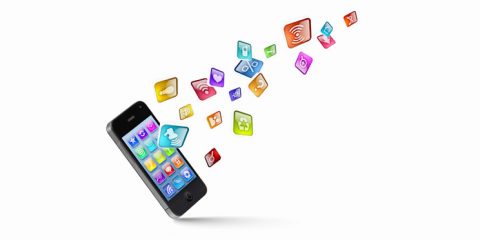Smart Apps for PWDs using OCR
Research article  Open access |
Available online on: 25 November, 2020 |
Last update: 27 October, 2021
Open access |
Available online on: 25 November, 2020 |
Last update: 27 October, 2021
 Optical Character Recognition (OCR) is a technology that allows you to transform different types of documents into editable and searchable content, recognize and transform text or print documents, such as scanned paper documents, PDF files, or digital camera images, and convert them into digital text documents. The OCR program extracts and converts the characters into machine-readable data.
Optical Character Recognition (OCR) is a technology that allows you to transform different types of documents into editable and searchable content, recognize and transform text or print documents, such as scanned paper documents, PDF files, or digital camera images, and convert them into digital text documents. The OCR program extracts and converts the characters into machine-readable data.
With the fundamental technology being Optical Character Recognition (OCR) technology, there are many creative assisted learning technologies available.
Using OCR technology has transformed efficiency in the classroom, increased student participation and motivation, and, most significantly, accelerated learning. Also, this innovation has played a crucial role in improving the lifestyle of persons with disabilities.
To convert a physical copy of a document into an interactive (or soft) format, OCR technology can be used. For instance, if you scan a multi-page document and want to convert it into a digital image format such as a TIFF file, you can load the document into an OCR program that identifies the text and converts it into an editable text file.
When creating, editing, and reusing different documents, an advanced, powerful OCR program helps you to save a lot of time and effort.
Groundbreaking examples of OCR technology-based solutions were developed to support people with disabilities. These solutions helped reduce reading difficulties for people with dyslexia, allowed visually impaired people to read mail and fill out forms independently, made learning tools and lessons accessible to learners with learning difficulties and reading difficulties through text-to-speech and gave visually impaired people access to text-to-speech image-based PDFs.
examples of these apps include:
1. ClaroPDF
As PDF files are basically images of documents, they pose a problem with the basic technologies of text-to-speech. ClaroPDF is an app that can recognize and interpret text in pictures. It retains the formatting of the original text, unlike most OCR apps. It includes synchronized highlighting, text-to-speech, annotation tools, audio and video notes addability, and Dropbox integration.
2. SnapType Pro
For students with dyslexia, workbooks and photocopied worksheets may be troublesome. For fill-in-the-blank and matching exercises, the formatting is always lost during regular OCR, an issue that makes it hard to use AT to insert responses. By giving users the ability to overlay text boxes on worksheet images, SnapType solves the problem. A keyboard can then be used by students to position their answers in the correct spaces.
3. Snapverter
For Google ChromeTM, Snapverter is an easy-to-use add-on for Read&Write that converts classroom papers and files into readable PDF documents for easy sharing through Google Drive and aloud reading.
4. Prizmo
With advanced editing, OCR, and text-to-speech, scan any image with text into PDF. In order to enhance their learning environment or reading skills, Prizmo may be used by low vision students or students struggling with dyslexia in classrooms.
5. Voice Dream Reader
Voice Dream Reader is a flexible iOS and Android application for reading. This app is beneficial for anyone, including people with various disabilities, with Dyslexia friendly font, text and audio synchronization, adjustable font size and color variations, as well as complete voiceover support.
6. Aipoly Vision
Aipoly Vision utilizes artificial intelligence and OCR to help low-vision people better understand their surroundings. Users point the app at an object and simply press a recognition button. Once users encounter a sign or document, they can switch to the “read text” button to read it out loud. It can also read text in multiple languages.
7. Digit Eyes
Digit Eyes was created for the visually impaired shopper. This software audibly reads the manufacturer barcode and the product’s name. For household products, users may also record their own labels.
